Best EDC Flashlights in 2023
Discover best-in-class EDC flashlights to elevate your EDC…
Write, Light, Slice – these make up the three pillars of the modern EDC kit, distilling everyday carry down to the basic tools that will cover most needs on a typical day. For me, the “light” portion is probably my most reached-for tool. Having a proper lighting setup means added safety when walking at night or on an early morning run. It means being able to read a map on a trail, cook dinner at camp, or repair your car on the side of the road.
EDC flashlights are something that many used to take for granted. Many of us grew up with a large black torch in the kitchen drawer, with an output that never quite matched its size and heft; it was more of a blunt tool rather than an illumination device. But with the large advancements in LED’s, battery technology, and drivers, today’s EDC flashlights are true pocket rockets.
What to Consider in EDC Flashlights
When deciding on EDC flashlights, there are a few considerations to keep in mind. You want something you are comfortable with carrying, that has the power and runtime you need including having plenty of juice on standby, and has the output and quality of light for the environments you’ll find yourself in.
Size and Material
If an EDC flashlight isn’t a comfortable size and weight, it’s going to be left behind. A light that’s in your toolbox or cabinet won’t be useful when you’re out in the field. Most EDC flashlights are below 5 inches, with the majority below 4 inches. As you can imagine, the primary factor that affects both the length and diameter of a light is the battery powering it. However, choice of tail switch, reflect/optic and driver/LED stack can all play a large role as well.
You’ll want EDC flashlights that are comfortable to hold in your preferred grip. I like to hold lights in my palm and wrap my fingers around it. This means there’s a lower bound to how short a light can be before my hand is covering the business end of the torch. But that is not to say that smaller lights don’t have their place. For AAA-sized lights, switching to a “cigar-grip” can be very effective.
Most EDC flashlights used to be made of aluminum and while that is still the most popular material, many enthusiast EDC flashlights are now offered in stainless steel, titanium, copper, brass, and other materials. The three key factors here are price, weight, and heat conductivity. Keep in mind that while materials like copper and brass make great heatsinks, they are also very heavy (more than twice an equivalent aluminum light), and will tarnish (or “patina”, if you prefer).
Power Source and Charging
In the past twenty years, there have been large advances in battery technology and this has led to even more powerful EDC flashlights, in smaller packages. Up until the early 2000s, almost all lights were using disposable alkaline batteries. These did not offer great energy density and most were just 1.5 volts. Nickel Metal Hydride (NiMH) batteries were rechargeable but I’d argue an equally compelling advantage was they didn’t leak when stored in a light for long periods. Next came primary (read: not rechargeable) lithium batteries but these were usually found in the form of a CR123 at 3V. That all leads us to today where lithium-ion (Li-Ion) batteries are what’s mainly used. These batteries have the same chemistry used in your smartphone, laptop, and even electric car if you own one.
Flashlight batteries are referred to by a number, which is simply a combination of its diameter by length. So what you might call a AA is referred to as 14500 because it’s 14mm in diameter and 500mm long. Other popular sizes are 10440 (AAA), 18650, 18350 and 16340 (aka CR123). What’s important here is the battery size will greatly dictate the size (and weight) of your light and it’ll also affect how long your light can run since, naturally, the larger the battery the more energy it can hold.
Once you figure out your power source, you need a way to charge it. With disposable alkaline batteries, we traded the environment for convenience. And quite frankly, primary cells have other weaknesses as well. The most convenient option is to purchase a charger that can handle different types of battery chemistries and sizes. But, if that seems like too much of a commitment, there are plenty of flashlights that can be recharged simply by plugging in a USB cable, or by utilizing an included magnetic charger!
Output and Color Temperature
Pull up an old ’90s police show and pause it when they are chasing a suspect through an alley. Remember those big flashlights cops used to carry? The beams were neither bright nor beautiful. Light output can be measured in many ways but the industry has mostly settled on lumens, which is a measurement of the total energy output (or total visible light) from a light source. The more lumens, the brighter a light is. Keep in mind that the human eye perceives brightness logarithmically so you need a doubling of brightness for your eyes to see it as a “significant” change.
The darker an area or scene is, the less light you need. In many applications, having just enough light to light an area is preferable to having a very bright light. For example, 5 to 10 lumens is enough for someone to navigate a pitch dark house. 100 to 300 lumens is a very useful range for EDC use.
Lastly, LED’s have a color temperature measured in Kelvin. The sun at high noon is about 5000K – 5500K while incandescent light bulbs are around 2700K (warmer). This, combined with CRI (color rendering index) affects how things you are lighting up with your flashlight are perceived.
Now that you know about flashlight size, material, batteries, and light quality, let’s take a look at some EDC flashlights that we recommend.
This guide was last updated February 2023
Nitecore NU25 UL
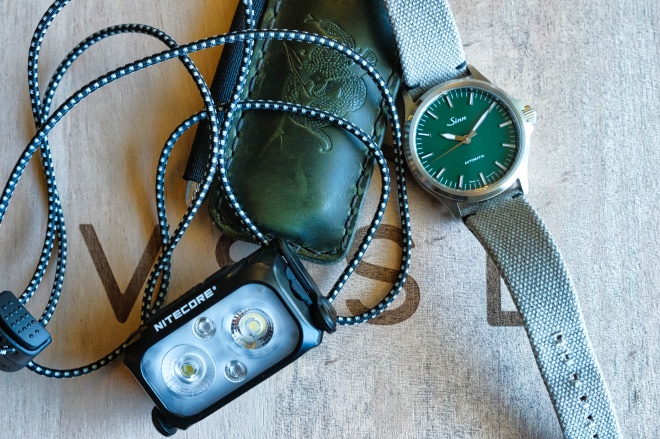
I often reach for a headlamp even when working around the house or out in the driveway, when I need both hands free and illumination always directed at my subject. They say the best tool is the one you have on you, and I’ve been guilty of not packing a headlamp on outings because I am worried about the weight. With the Nitecore NU25 UL, it’s hard to use that excuse any longer. The Ultra Lightweight headlamp weighs just 45 grams yet offers 400 lumens of maximum output, red light for preserving night vision, triple output, and a max runtime of 45 hours. It can achieve its lightweight by using a headband made of two thing bungee cords, a hollow bracket, and light plastic material for the housing.
As mentioned, it has three output sources – a spotlight, floodlight, and red light which can be turned on independently or work in conjunction. For example, if both the spotlight and floodlight are used, a field of view of 100 degrees can be lit up while a subject 58 meters away would have a directed hotspot directed at it.
The light has a built-in 650 mAh Li-ion battery which can be topped up via USB-C. Speaking of power, it has power indicators via four small blue LEDs giving an approximate power level. Furthermore, it boasts 365-day standby capability, which makes it an excellent car or bugout kit option.
Nitecore TINI 2 Ti
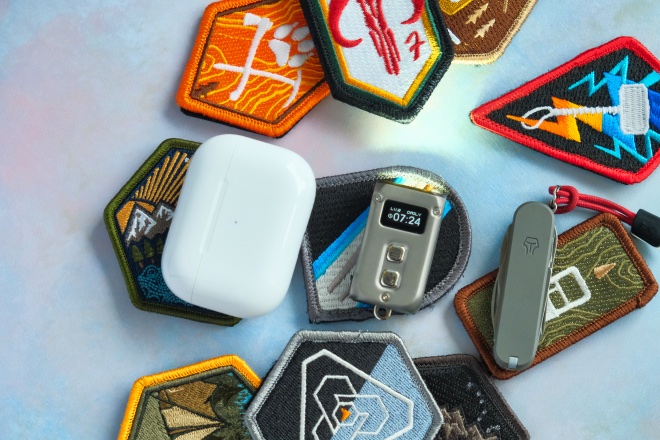
Nitecore continues to innovate and push the boundaries of flashlight design and features. They were among the first to offer ultrabright keychain flashlights with Li-Ion batteries when the competition still used standard AAA batteries.
The TINI 2 features two OSRAM P8 emitters outputting a maximum 500 lumens. It supports five brightness levels controlled through a dual switch for easy single-handed operation. It has a built-in 280mAh battery, recharged through USB-C and providing it 60 hours of runtime on ultralow mode and 15 minutes on turbo. The standout feature of the TINI 2, besides the output potential in such a small package, is the OLED display. The screen shows real-time information like brightness level, mode, lumen, battery voltage, and the remaining runtime.
Measuring just 1.83” in the longest dimension and weighing in at 0.66 oz, the TINI 2 Ti truly is an ideal EDC keychain flashlight.
Skilhunt M150
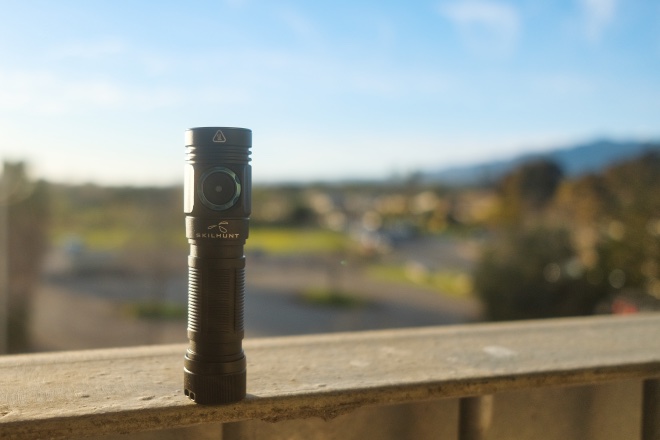
Skilhunt’s 14500 (or AA) size flashlight packs a lot of features and punch in a small package. Like many lights, it too switched to Nichia’s 519A. This gives it a maximum output of 750 lumens, accessed through 4 main modes and 4 sub modes. It features magnetic charging for convenience as well as a magnetic tail cap, allowing the user to mount it to various surfaces for hands-free operation. It comes packaged with an 800 mAh cell, spare o-rings, pocket clip and pouch; everything you need to get running after receiving it. Using a single emitter, Skilhunt was able to keep things compact. The M150 uses an electronic side switch which is easy to activate and use to switch modes. Outputting at 4500K and backed by an orange peel reflector, the beam has a useful mixture of flood and throw with a nice hotspot. The M150 is a great small flashlight perfect for any EDC kit.
Rovyvon Angel Eyes E5
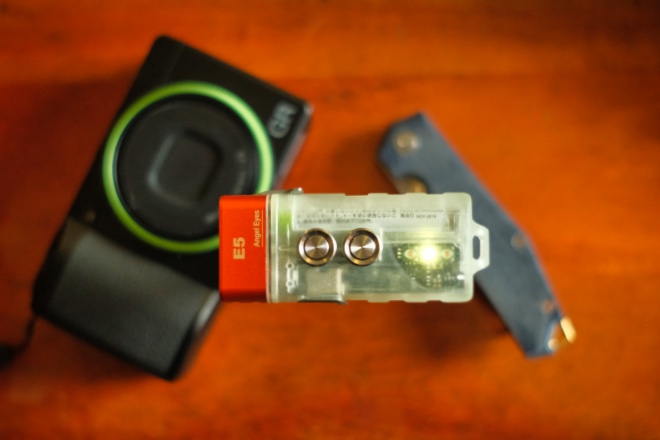
Rovyvon has long taken over as my favorite keychain light of choice. It’s incredible to think of how long small, compact lights have come since the PeakLED days. Most of RovyVon’s offerings are very similar, sometimes causing confusion on how to differentiate them. With their Angel Eyes release, they indeed created something new and unique.
The small rectangular, lighter-esque Angel Eyes series have built-in LiPO cells but also can run on a single AAA battery! As you’d expect from the company, Angel Eyes are available in several body and emitter options, but the one highlighted here is the E5 Red model, which features a warm (4000K) emitter, glow-in-the-dark semi-transparent case, and red side emitters.
The E5 has a maximum output of 500 lumens through its dual high CRI emitters and a maximum runtime of 62 hours in moonlight mode if using the built-in Li-Po cells. Speaking of batteries, with a simple unsnap and swing, the top rotates to reveal a battery bay for a AAA cell. The E5 supports a user-provided Alkaline or NiMH AAA battery. While the output on the AAA battery is often much less than the built-in Li-Po, there are advantages to having dual power sources and the ability to use readily available battery sources. The built-in battery recharges via USB-C.
The light has both the primary light out the front and three sidelights, for a total of 5 LEDs. Whether you want to use it as an ordinary flashlight, as a tent lantern while camping, or clipped to the brim of a cap to read a map or check under a car hood, the E5 can do it all.
BioLite HeadLamp 425
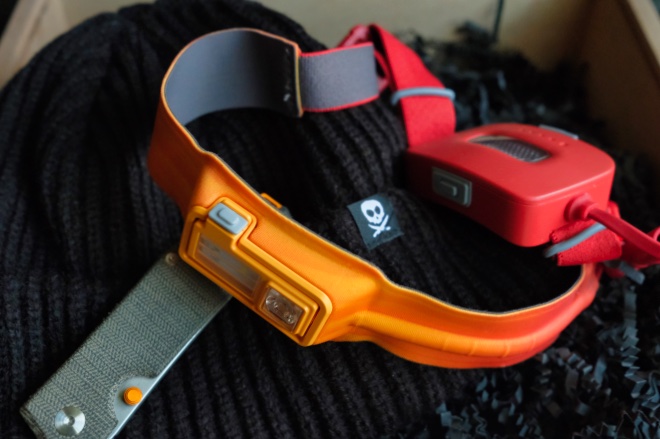
The team at BioLite started with the goal of producing stoves that burned cleanly and also provided energy (and thus lighting) to developing countries. Since then, they’ve grown into an honest energy company, and a few years ago, they introduced their line of headlamps. We’ve covered their HeadLamp series before, but recently, they revamped their offerings with some notable changes.
The HeadLamp 425, which I call the “Goldilocks” model, has improved with an increased beam distance, better run time, and temperature use rating. They made the power button larger and glove-friendly. There’s now USB-C charging instead of the previous micro USB. Two new light modes were added – rear red strobe and rear red flood. And lastly, this model now supports pass-through charging, which they called “Run Forever”. This means you can plug the headlamp into a power bank, dramatically extending your use period. If you’re looking for something in a lighter package, they also have a 325 model and the 800 PRO if you want to step up to an even more deluxe model, with nearly twice the output.
Olight Baton 3 Pro
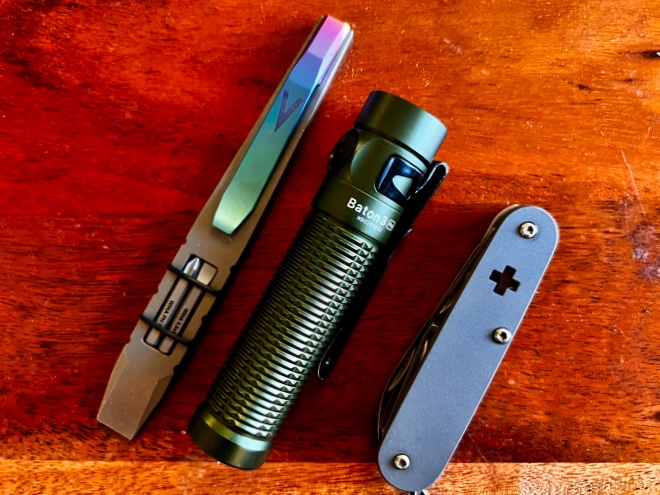
While it may look like the most traditional light on the list, the Baton 3 has many hidden features that make it an ideal EDC companion. The Baton 3 Pro is a new model for Olight. It is similar to the Baton 3 but with the size of the S2R Baton II (read: 18650 battery).
The light measures under 4 inches in length, is 0.91 inches in body diameter and weighs 3.63 oz. It improves on the S2R Baton II in several ways. First, it produces a whopping 1500 lumens and can light up a subject up to 175 meters away. This trumps the S2R Baton II, which “only” produces 1150 lumens at 135 meters. It has double the maximum runtime (120 days) at the lowest level. The body has been changed as well, with new body knurling for batter grip, a larger concave side switch, and a longer clip that now features a lanyard hole.
Like it or leave it, the Baton 3 Pro supports Olight’s signature USB magnetic charging cable; just snap it on and start charging. Rounding out the features are the IPX8 waterproof rating and two color temperatures on offer (5700-6700K cool white or 4000-5200 neutral white). The feature-rich Baton 3 Pro is truly a do-it-all EDC light.
Olight Arkfeld
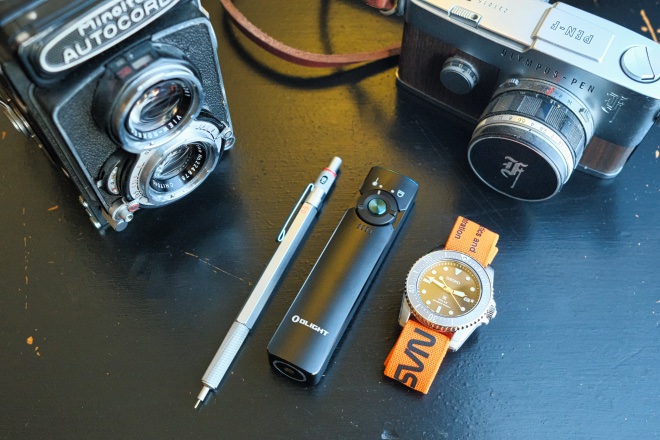
The first flashlight was invented about 125 years ago and was a fiber tube with brass end caps. Since then, most lights have had this cylindrical shape, and this form factor will likely be the prevailing one for the foreseeable future. However, anyone that’s used a normal flashlight can attest that this might not be the best shape.
Though not the first or only wedge design on the market, the Arkfeld stands on its own for its unique feature set. Announced in mid-Summer 2022, the Arkfeld is shaped like a small media remote which promises a better ergonomic grip and anti-roll shape. Launched with four body colors, Olight has since made special editions.
The Arkfeld has a white light with a maximum output of 1,000 lumens in five brightness levels. Depending on taste, users can choose between a Cool White (5700-6700K) or Neutral White (4000-5000K) emitter. The aforementioned flat, ultra-thin body weighs only 3.07 oz and is 0.59 inches thick. It includes a built-in pocket clip, and the end is magnetic to allow for hands-free usage.
The user interface is unique as well, utilizing a thumb dial that you rotate left and right. Pressing on the center of the dial controls the brightness of the white LED. And rotating the dial left reveals its secret feature: a bright green laser pointer perfect for presentations. It also features memory mode, strobe, and ultralow moonlight. Finally, there’s a power indicator on display, so you immediately know how much juice you have at a glance.
Lumintop Ant Man
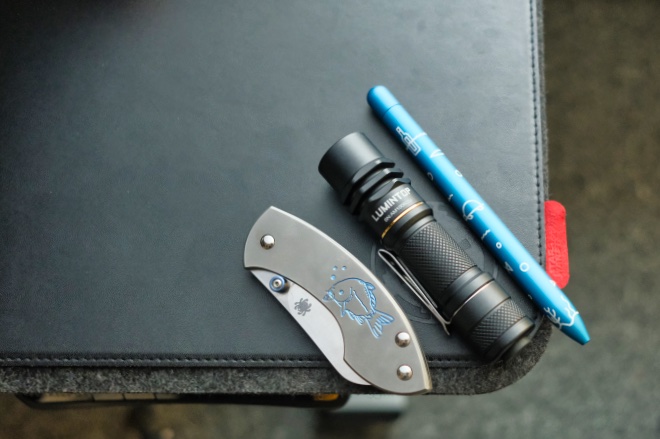
LEP flashlights were introduced a few years ago but are still not widely known outside of enthusiast circles. LEP, or Laser Excited Phosphor, lights work in a totally different way than traditional flashlights, which pair an LED emitter with an optic or reflector to direct the beam. Instead, LEPs use a blue laser to excite (light up) a phosphor element, which results in intense directed light. In practice, LEPs produce incredibly bright lights with laser-like beams capable of shining much further than a standard flashlight. This means LEPs are great for spotting a subject at vast distances but not great at lighting up a large area up close.
Lumintop was one of the first companies to make the technology more accessible, and their Ant Man is a key step in that direction. The Ant Man is considered to be a very compact LEP flashlight. It measures 100 mm (3.94 inches) long, with a diameter of 19mm and weighs just 62 grams. It is powered by a 14500 (AA-sized) Li-Ion battery with a runtime of 62 minutes and a maximum output of 165 lumens. Don’t let the output fool you, though; using the 6W laser emitter, the Ant Man is capable of putting a spotlight some 590 meters away. Compare that to the Baton 3 Pro on this page, which reaches just 175 meters with 1500 lumens.
The Ant Man is incredibly simple in design. It has a forward clicky switch with a momentary or constant on. It has three cooling fins, a two-way stainless steel pocket clip, and a turbo glow bezel ring in the front.
It’s a great light to test out the LEP waters. However, if you want something more substantial, consider the NlightD L1. This 500-lumen thrower outputs 500 lumens and reaches 2786 meters! It is substantially more prominent and is powered by a 21700 battery, but if you have the capacity for it, what it lacks in portability, it makes up in sheer output.
Okluma DC0 Titanium
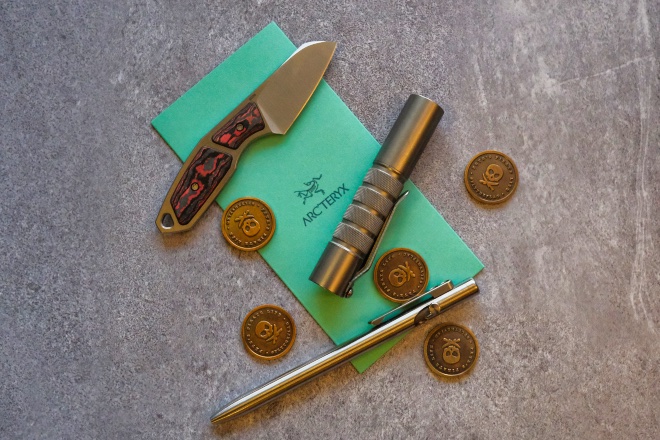
In the early days of enthusiast flashlights, there was a mix of large commercial operations and hobbyists. The latter generally lacked a website or any sort of e-commerce software, and you often had to email them or send them a private message on Candlepower Forums to place an order. In these early days (2015), a name started getting passed around. Jeff Sapp, a young machinist and avid cyclist out of Oklahoma was producing his take on the “triple,” a new format introduced recently by another creator. From the beginning, Jeff and his company Okluma set themselves apart in a few key ways: a lifetime warranty, responsive customer support, continuous improvements through interactions, investment in tools and technology, and a consistent and candid approach to sharing the growth and changes at the company and with the products.
While the original DC1 launched Okluma, the DC0 is the current king of lights. This iteration, the Titanium DC0, can typically only be obtained through weekly lotteries on the Facebook group. Despite being relatively new, the DC0 has undergone noticeable changes and improvements. Some of these include: potting compound around the driver, driver soldered directly to pill (and getting rid of the ground wire), glow-in-the-dark optic, new McClicky switch that eliminated gouging the battery, a slight shortening of the body to hold the cell more securely, and more consistent shoulders and chamfers.
The light has switched to the more efficient Nichia 519A emitter, is available in 10,20, or 30-degree optic, has moonlight, low, medium, and high modes with optional memory, and is powered by a 14500 (AA) Li-Ion battery. It’s comfortable to hold, lightweight has incredible color rendition and tint, has a dead simple user interface, and is backed for life.
Foursevens Preon P1 MKIII
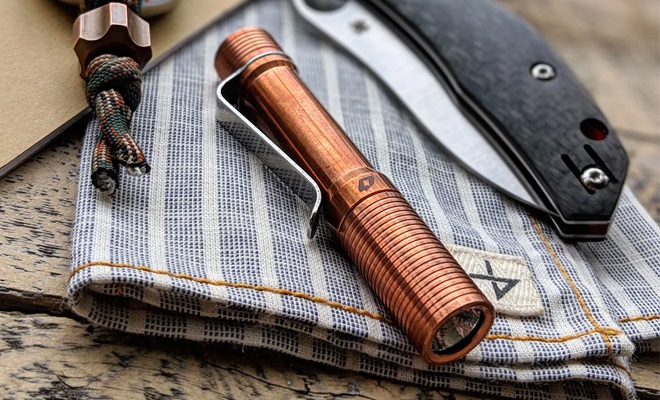
The original Preon was created in 2010. But the design has been honed over more than a decade to its third and final iteration, making it the best it can be with nothing left to improve. Sure, that sounds bold. But on closer inspection, this flashlight does exactly what it’s meant to with elegant dependability. Designed to provide plenty of illumination when required but otherwise store away compactly in a pocket, the flashlight now comes with an improved clip design. The grooving has been removed under the clip and it’s stronger too, protecting your pocket while delivering confident carry.
The tailcap has also been improved to prevent it from easily turning on while in your pocket. Plus the flashlight features the latest Nichia 219C with a 5000K color temperature and 90+ CRI, so you get the sweet spot between output and beam quality. The clicky flashlight uses a AAA battery and can be configured in a variety of different ways to suit different user needs. It will provide an hour of illumination on its maximum brightness setting of 100 lumens, with a 45-hour runtime on the lowest setting of one lumen.
This article was originally published on 20 July 2021 and updated on 6 February 2023.





 Carry Awards
Carry Awards Insights
Insights Liking
Liking Projects
Projects Interviews
Interviews
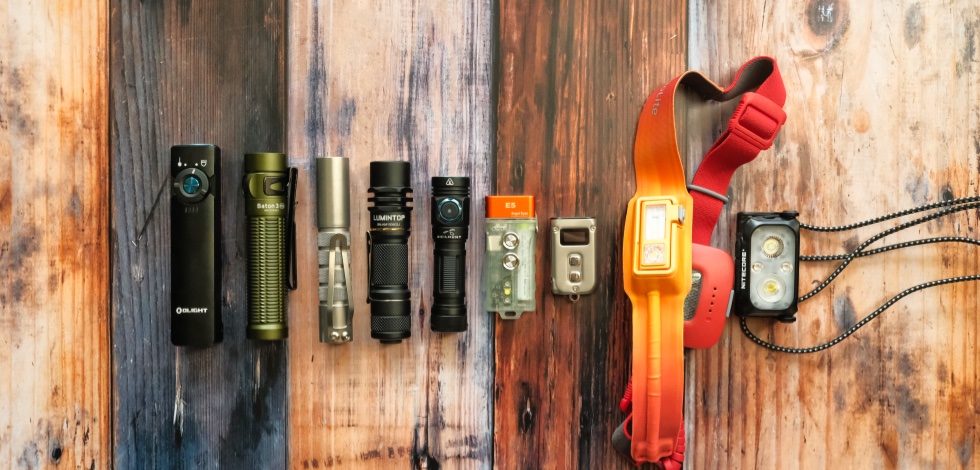





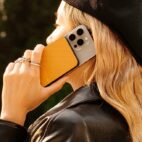
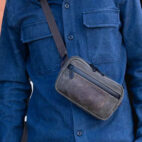
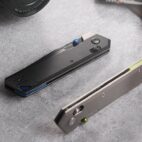
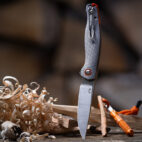



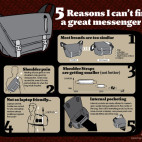
2 thoughts on “Best EDC Flashlights in 2023”
Comments are closed.